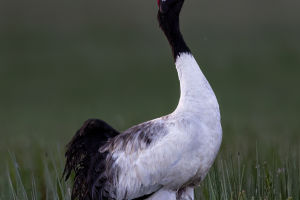In this world, motherhood is a revered and celebrated phenomenon across various species.
Beyond humans, many animals exhibit collective child-rearing behaviors, such as the remarkable example seen in lions.
Lions, within the feline family, stand out as a unique species where both males and females partake in the upbringing of their young. In a lion pride, it's common to observe lionesses collectively nurturing the cubs, a behavior that is deeply intertwined with lion mating and reproduction dynamics. The synchrony of reproduction among lionesses within a pride is a pivotal factor in the collective rearing of cubs. Most lionesses in a pride tend to enter heat simultaneously and give birth around the same time. Consequently, cubs within the same generation are typically of similar ages, facilitating the communal care provided by the lionesses.
Prior to giving birth, lionesses meticulously seek out safe birthing locations to protect their vulnerable offspring. This protective instinct stems from the fragility of newborn lion cubs, necessitating a secure environment to minimize threats and ensure their survival. As the cubs reach around four to five weeks of age, the lionesses return to the pride with their young, transforming the pride into a cohesive familial unit. Under the watchful eyes of the lionesses, the cubs thrive and learn essential survival skills, fostering a nurturing environment within the pride.
The social nature of lionesses plays a pivotal role in the upbringing of the cubs, ensuring their well-being and development. From the time they rejoin the pride until they reach approximately two years of age, the cubs undergo a period of learning and growth, guided by their "mothers" and "aunts." Upon reaching maturity, around two years of age, the young lions depart from the pride to embark on their solitary journeys. While the popular image may depict male lions as solitary fighters for territory, the reality often involves the formation of male lion alliances.
These alliances, predominantly comprising biological or half-brothers, are facilitated by the collective feeding dynamics within the pride. The collective feeding of cubs serves as a crucial aspect of lion development, facilitating the formation of male lion alliances and contributing to the overall cohesion of the lion family. Contrary to popular belief, solo territorial fights among male lions, as depicted in narratives like "The Lion King," are rare, with most male lions forming alliances for mutual benefit.
Beyond lions, recent research highlights similar "alloparenting" behaviors observed in Sichuan snub-nosed monkeys, despite their distinct survival modes from lions. While these species exhibit different survival strategies, their shared nurturing behaviors underscore intriguing parallels in animal research, offering insights into the diverse manifestations of motherhood and collective care across the animal kingdom.
For instance, meerkats, renowned for their social structure, engage in cooperative breeding, where non-breeding members of the group assist in raising the offspring of dominant individuals. Similarly, African elephants demonstrate an intricate network of care, with multiple females, often related, participating in the nurturing and protection of calves within a herd.
These diverse examples highlight the adaptive nature of collective caregiving strategies across different animal species, underscoring the significance of social dynamics in ensuring the survival and well-being of offspring.


